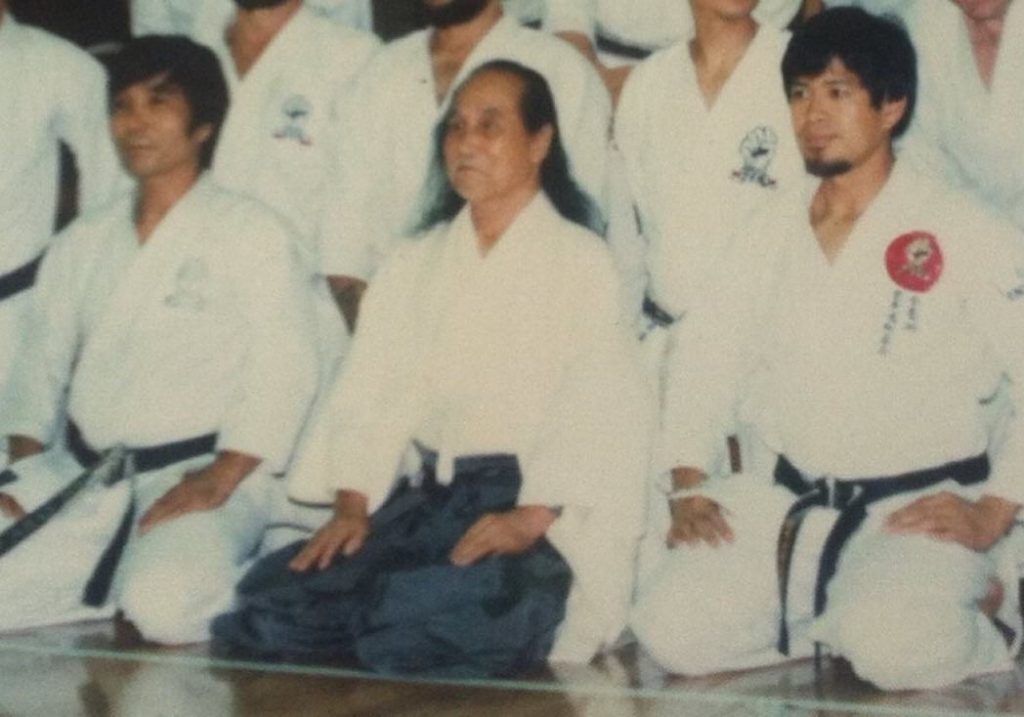TENSHO
The influence and evolvement to the compliment feature of the HARD & SOFT, Tensho or the turning hands were from the PaQua Chan or White Crane system of the Chinese GungFu. The movements of the hands open and turning, folding, and flapping made specific descriptions to animalistic movements ie. The coiling of a snake, a birds wing in flight, and the form of the cat’s paw.
This form represents the softness of the GOJU. Its primary motions extends from the previous feature of the HARD physical exercise only to be now presented in an open hand practice of soft, gentile and prolific to the breathing with motions contained as inner strength develops. Explaining the theory of the ‘CHI or KI’ in the oriental Marital Arts brings complex and abstract explanations often misunderstood with confusions to what brings practice falsely exercised.
Elaborated breathing forms will be explained in a separate segment of this training information. Subject to incorrect practice of the breathing may bring harm to health as masters of old will often mention.
The practice in the Martial Arts at present has brought science to highlight specifics in training. This clarifies the success performance to many systems that now appreciates the regimented application when applying to retention and automatic response in favor to a delayed return.
When proper science application to training and particularly teaching, it is necessary that the tactile method of presenting the skills taught are standard methods applied. This is a proven system and to be more on line with teaching with a purpose, comprehension to the exactness of the training will be achieved.
Thus a start to the slow but versatile methods applied when the forms of the Tensho or the turning palm form is understood.
The open palm is formed to be a passive and deceptive application when applied in the form of defense. The position of this open palm must be understood to act firstly as a repelling motion as if to imply the stop sign.
In the open palm the main features of the practice of TENSHO…Turning palm form, starts with the clawing of the cat like paws formulating a movement as that of a wind screen wiper moving from the width of one side of the body to the other in a stop which is formed a semi hooked hand (by way of the bottom of the ridge hand forming this catchment fold.
Note: The hand is also form of a tightened semi claw position where the thumb is semi folded inward, the first two fingers are extended and tensed, and the two remaining fingers are slightly turned in at the finger tips causing this claw form. In the visual presentation of the module a clearly defined description will better the explanation to the claw effect of this hand position.
Next follows the turning inward of the hand as like in the use of the inner forearm angled by the shoulder motion and slight body turn inward to commence what will be a semi circle downward swoop, emphasizing the back of the hand as deflecting block disengaging what would be as a thrusting punch or a grab on to the body action of disposing.
The motion is followed with a reposition to the shoulder by way of the turning palm again righting itself up into a forward position of preparing to execute a forward movement.
This forward movement is the heel palm thrust. Emphasis on the heel palm being the thrusting strike (fingers are poised also in a potential downward pawing slash). From this position as held outright, the turning palm completes a circular turn outward as an 80% percent turning form.
On completion of this, a drawback to chamber from the side of the ribcage as a position of the next launch becomes then the downward heel palm strike with the heel of the palm towards the groin or pubic area of the body.
This completed, from that position, the uplift ridge hand strike is formed (the thumb is centered between both two fingers, the wrist is then turned upward now securing the ridged hand for an upward lift) this is the form like a snake coiled and about to strike as with the both fingers in position being the fangs.
A downward motion follows next with the hand forming a ridged heel of the knife hand becoming the downward strike.
At outward fold of the wrist now applies a back hand wrist strike applies as a birds wing fold in motion.
Completion to that draws the inner folding of the wrist now being the hitting motion of the reverse fold of the wing in motion.
Having described that portion of the TENSHO gives a portion of the components to the form exercise that this KATA or FORM as described in definition of the Japanese word, makes the thought of study more complete for a breakdown of the movements bringing to life the manner in which it was to be practiced.
KATA is the back bone of the Martial Arts Training as originated by Orientals who created this exercise as a unique manner in which displays the aesthetics of the training therefore the word of ART in description to the physical attributes.
– Written by Hanshi Tino Ceberano in 2011
